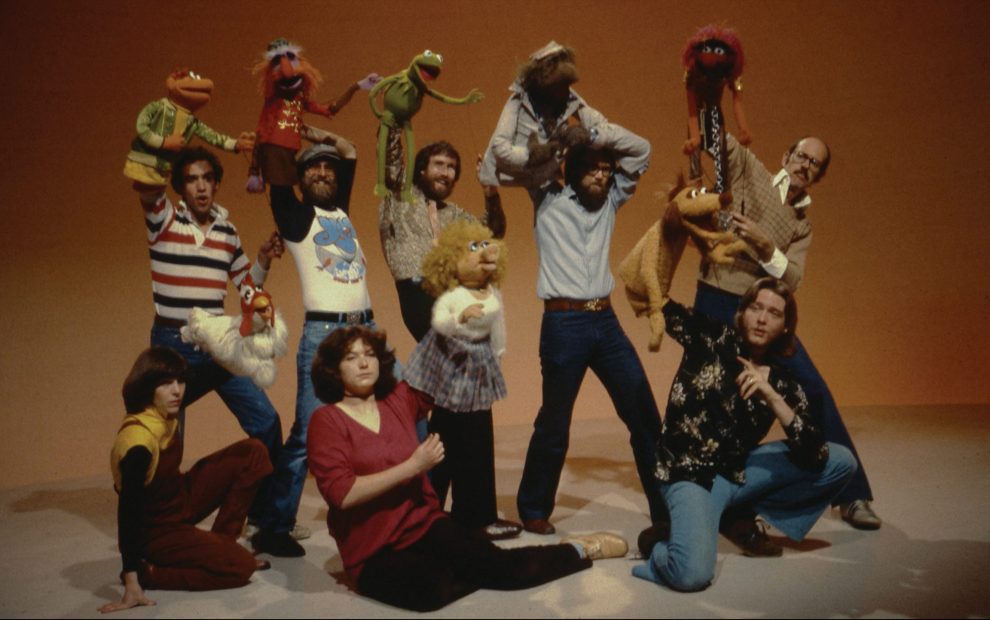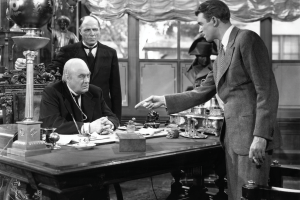Jim Henson wasn’t interested in making children’s shows. That is one of the big surprises in Ron Howard’s new celebratory documentary Jim Henson: Idea Man. This may sound almost blasphemous to some. After all, how could one of the creative minds behind the Muppets and such groundbreaking educational shows as Sesame Street not be interested in children’s shows?
It’s a reasonable question, one which Howard lets Henson’s closest coworkers, family, and friends explore as they recount their amazing journey with one of the true creative minds of the 20th century. Born in a small town in Mississippi in 1936, Henson was the youngest of two boys. His father worked for the U.S. Department of Agriculture, perhaps encouraging Henson’s lifelong love of nature. As Henson’s creative assistant Alex Rockwell recalls, “From a very early age he had the feeling that he was here for a purpose and a reason, and that’s largely what drove him.”
That purpose had less to do initially with puppets and more to do with television. In an interview with Orson Welles, Henson shares how awestruck he was when his family first got a television. What gradually emerged in Henson’s life was his recognition of both the vast reach of television and its creative potential. Television became the vehicle for Henson to express his deeply held values and an arena to let his imagination freely wander in creative collaboration with others.
One of the strengths of Howard’s documentary is the commentary of close collaborators and family members such as Frank Oz, Michael Frith, Cheryl Henson, and Brian Henson, a testament to Henson’s skill as a collaborative leader. Whether ad-libbing a comedy sketch with Bert and Ernie, giving creative license to costume designers, or making opportunities for performers to develop their characters, Henson magnified the gifts of others.
Today, organizations emphasize the importance of “culture-building,” realizing the positive impact it can have not only upon the happiness of its employees but also on their overall productivity. Here, Henson was ahead of his time, creating a community that celebrated everyone’s gifts and encouraged a sense of play. Children naturally picked up on this and wanted to play along, which in turn energized his coworkers. Reflecting on this method, Henson writes, “Certainly we look for creativity and a sense of humor, people who have a positive view of the world, that kind of thing. We look for people that work collaboratively.”
And what was this work? Initially, it was providing entertainment and humorous advertising with Muppets that he and his wife, Jane, created. Jim and Jane eschewed aspects of classic wooden marionettes in favor of puppets that could be more expressive, like the now-iconic Kermit the Frog, whose cute little felt head can show joy, consternation, introspection, and a whole range of other emotions through the hands of the puppeteer. While the look of these early Muppets such as Kermit the Frog, Rowlf the Dog, and others was both novel and endearing, they would not have become such a success without Henson, Oz, and others bringing them to life with stories and imbuing them with hopes, fears, and personalities.
Oz recounts how Jim was initially reluctant to participate in Sesame Street. Desiring an audience beyond children, Jim wanted puppetry to be considered an art form in the United States as it was in Europe. Yet, Oz remembers, Henson “sensed the value of the show.” He eventually came to see the incredible impact of television on children and decided to, in his own words, “face up to the responsibility” of it. This sense of the good the Muppets could do made the difference in Henson’s attitude. Yes, they could delight children and make them laugh with characters such as Cookie Monster singing educational ditties like “ ‘C’ is for Cookie.” But they could also touch on much deeper issues, as when Kermit ponders aloud about being different.
Amidst over a thousand Muppets songs, “It’s Not Easy Being Green” is one of the most memorable, and for good reason. Ray Charles once said of it, “The song is about knowing who you are.” Watching Kermit walk through nature, comparing himself to the green things he sees that make him feel “ordinary,” when there are so many other eye-catching things like “sparkles in the water” or “stars in the sky,” validates the vulnerability so many children have while also subtly encouraging empathy. But then Kermit shifts to see the beauty in “being green,” making comparisons to it being the “color of spring” and “as tall as a tree.” This realization leads him to ultimately conclude that green “is what I want to be.” In its gentleness and openness to a wide variety of interpretations, “It’s Not Easy Being Green” speaks to children and adults alike, helping everyone acknowledge the beauty and value in themselves and others.
Perhaps somewhat lacking in the documentary is the recognition that Henson’s deeply attuned care and sensitivity for others had spiritual roots. Howard does give some time to Henson’s upbringing and religious views, noting that his mother raised him in the Christian Scientist tradition and, later in life, he was a “seeker.” Oz recounts how, after the unexpected death of a coworker, Henson tried to comfort Oz with his belief that death was not the end, that life continues in a new way.
But Henson’s own writing reveals a rich-lived spirituality. In a collection of short reflections published after his death titled It’s Not Easy Being Green: And Other Things to Consider (Hyperion), Henson writes, “I spend a few minutes in meditation and prayer each morning. I find this really helps me to start the day with a good frame of reference. As part of my prayers, I thank whoever is helping me—I’m sure somebody or something is—I express gratitude for all my blessings and I try to forgive the people that I’m feeling negative toward.”
Henson’s life wasn’t without challenges and failings. His monumental success and obsession with his work took a terrible toll on his relationship with his wife, and his neglect of his health may have led to his untimely death. Yet his belief in the positive impact of creativity offered with a loving intention endures as each new generation discovers empathy, kindness, and good humor through his beloved Muppets.
Henson originally created Kermit out of his mother’s green felt jacket and a ping pong ball. He did this to bring some comfort and joy to his grandfather when he was dying. It’s that compassionate spirit that made Henson not just an “idea man” but a man of heart.
This article also appears in the October 2024 issue of U.S. Catholic (Vol. 89, No. 10, pages 36-37). Click here to subscribe to the magazine.
Image: Disney+












Add comment